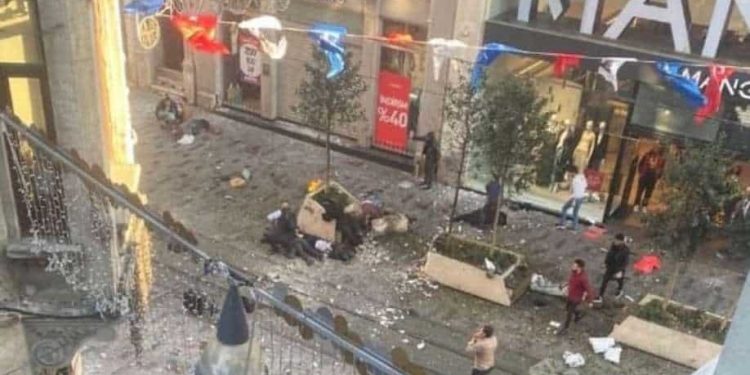BEHDINAN – HSM Headquarters Command said in a written statement, “First of all, we offer our condolences to the relatives of those who lost their lives in the incident that took place in Istanbul on 13 November and wish the injured a recovery.”
The statement continued:
“Our people and the democratic public know closely that we are not related to this incident, that we will not directly target civilians and that we do not accept actions targeting civilians. We are a movement that carries out a just and legitimate struggle for freedom. We act with a perspective that wants to create a common, democratic, free and equal future with Turkish society. In this respect, it is out of question for us to target civilians in any way on the ground of Turkey.
It is a clear fact that the AKP-MHP regime is having difficulties in the face of our developing legitimate struggle. Especially in the face of the fact that his use of chemical weapons has been exposed and that images of burning his own soldiers are revealed, it seems that a new dark plan is intended to be put into effect to completely change the picture. The fact that they specifically targeted Kobanê after this incident reveals the direction of their plans. From this perspective, although it is claimed that this incident is a dark one and that the elements used in this incident are Kurdish or Syrian, it is clear that this will not change the outcome. It is understood that this indicates the beginning of a dark plan. In this regard, it is important that all Turkish democracy forces and the public see the dark process that is desired to be developed and fight to decipher this event.”
Who really finances and supports terrorism? While the PKK fought and defeated ISIS, turkey aided them and now uses them as mercenaries in the Free Syrian Army (FSA)
After controlling Afrin, Idlib, Serekaniyê and Gire Spi, the turkish state employed thousands of ex-ISIS fighter in their ranks as part of their supported militias. Such as Hay’at Tahrir al-Sham (HTS), National Liberation Front and Free Syrian Army

The Syrian Democratic Forces (SDF), said that Turkey — a NATO member on the edge of the alliance’s geographic border with the Mideast — is allowing ISIS a “safe zone” in northern Syria. The death of the second top ISIS commander in three years in a home very close to Turkey’s border is presenting some awkward questions for the U.S. and its NATO partners.
Abu Ibrahim al-Hashimi al-Qurayshi blew up himself and members of his family as U.S. forces moved in February. He was holed up in a house in Atmeh, a Syrian town less than two miles from the Turkish border. It was a remarkably similar operation, with an identical outcome, to the 2019 U.S. raid that left ISIS’ previous leader dead. Abu Bakr al-Baghdadi was killed in a house southwest of Atmeh, less than three miles from Turkish soil.
“Many Daesh [ISIS] and al Qaeda leaders are still alive, protected by Turkey in occupied areas of northeast and northwest Syria,” the head of the SDF’s media and information office, Farhad Shami, told CBS News the day after al-Qurayshi was killed. “He was protected between three Turkish military bases. … Is there any doubt that Turkey turned areas of northern Syria into a safe zone for Daesh [ISIS] leaders?”
READ OUR FULL REPORT ON THE MATTER: Turkish state recruits thousands of ex-ISIS fighters to joint their militias in occupied regions of Syria




